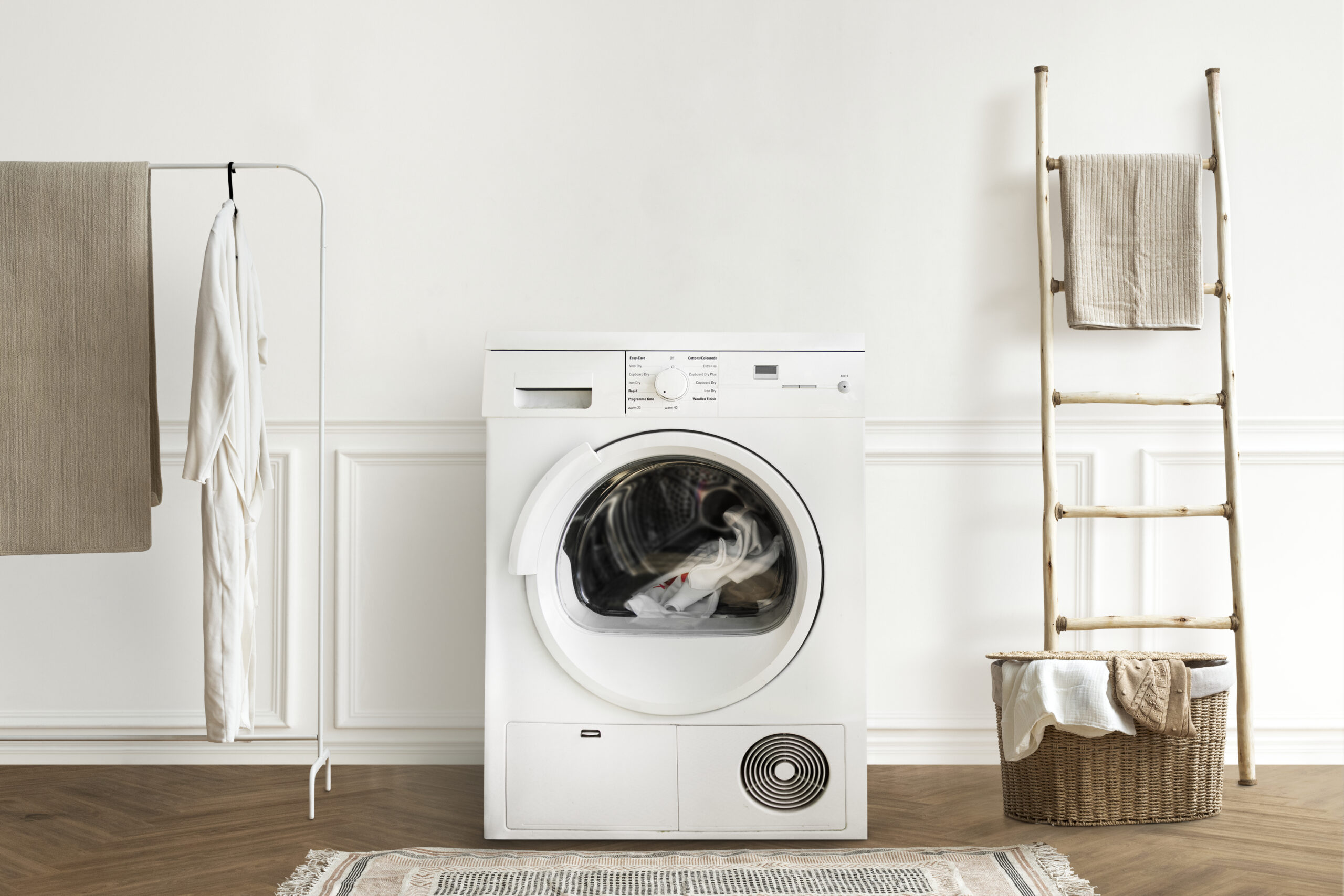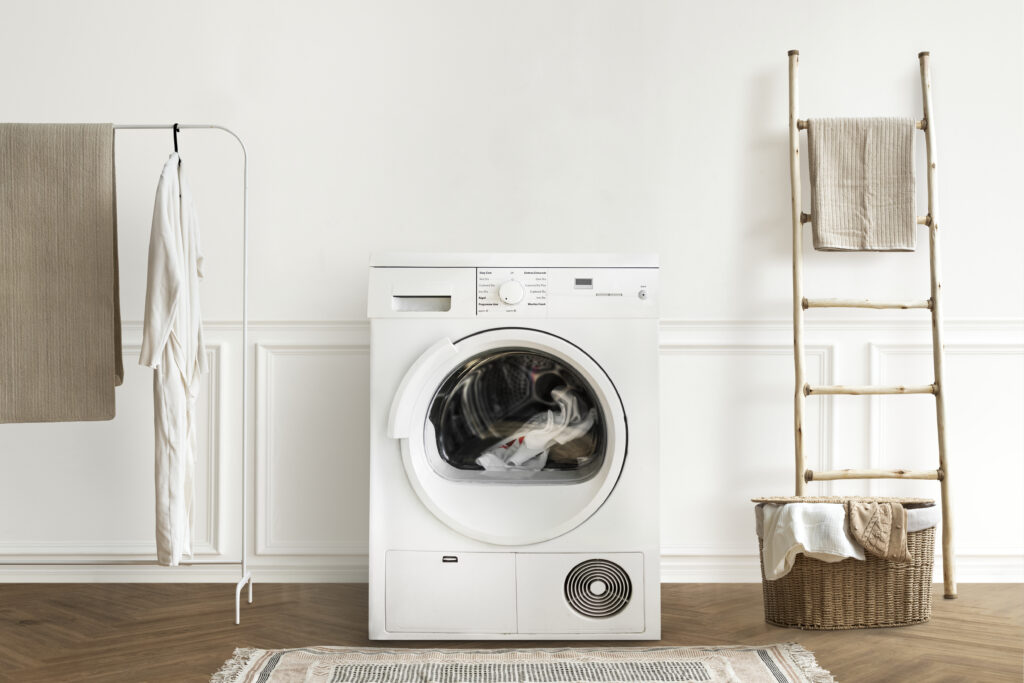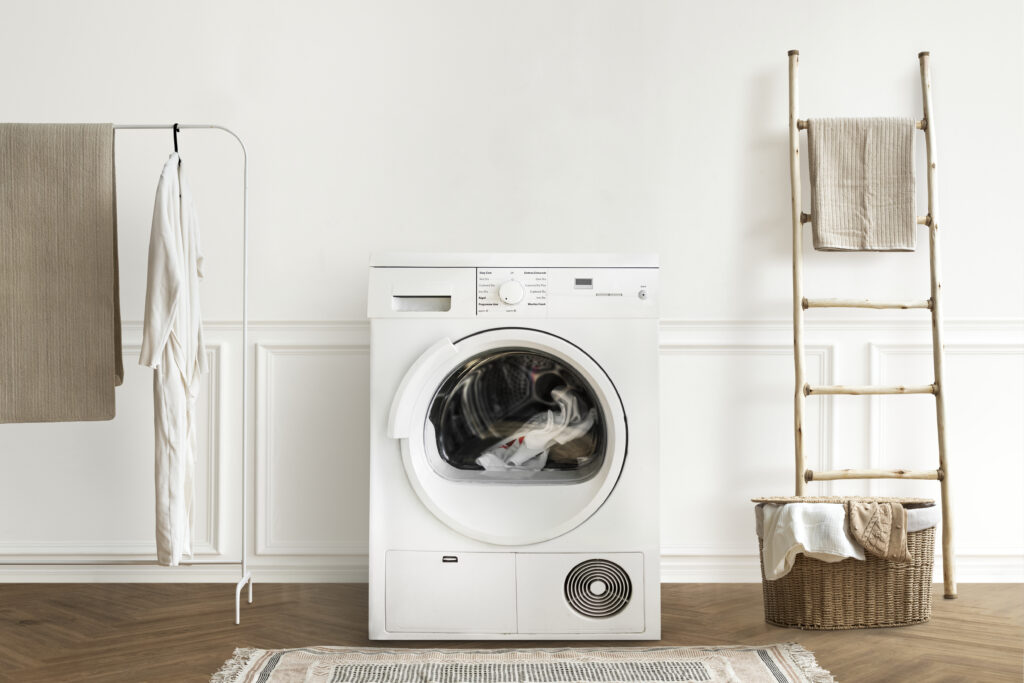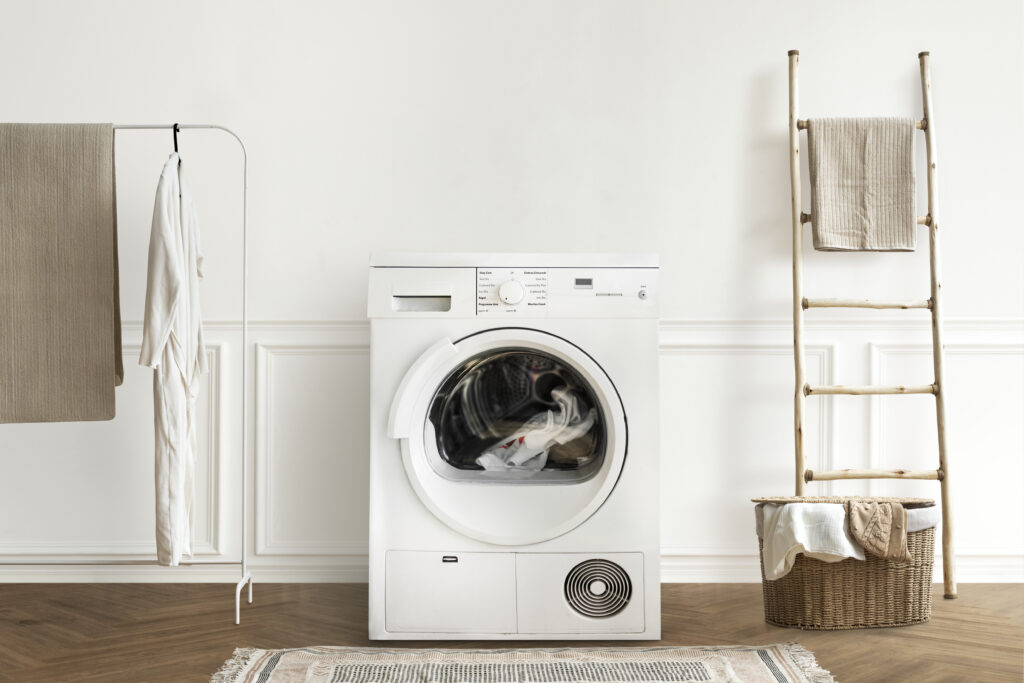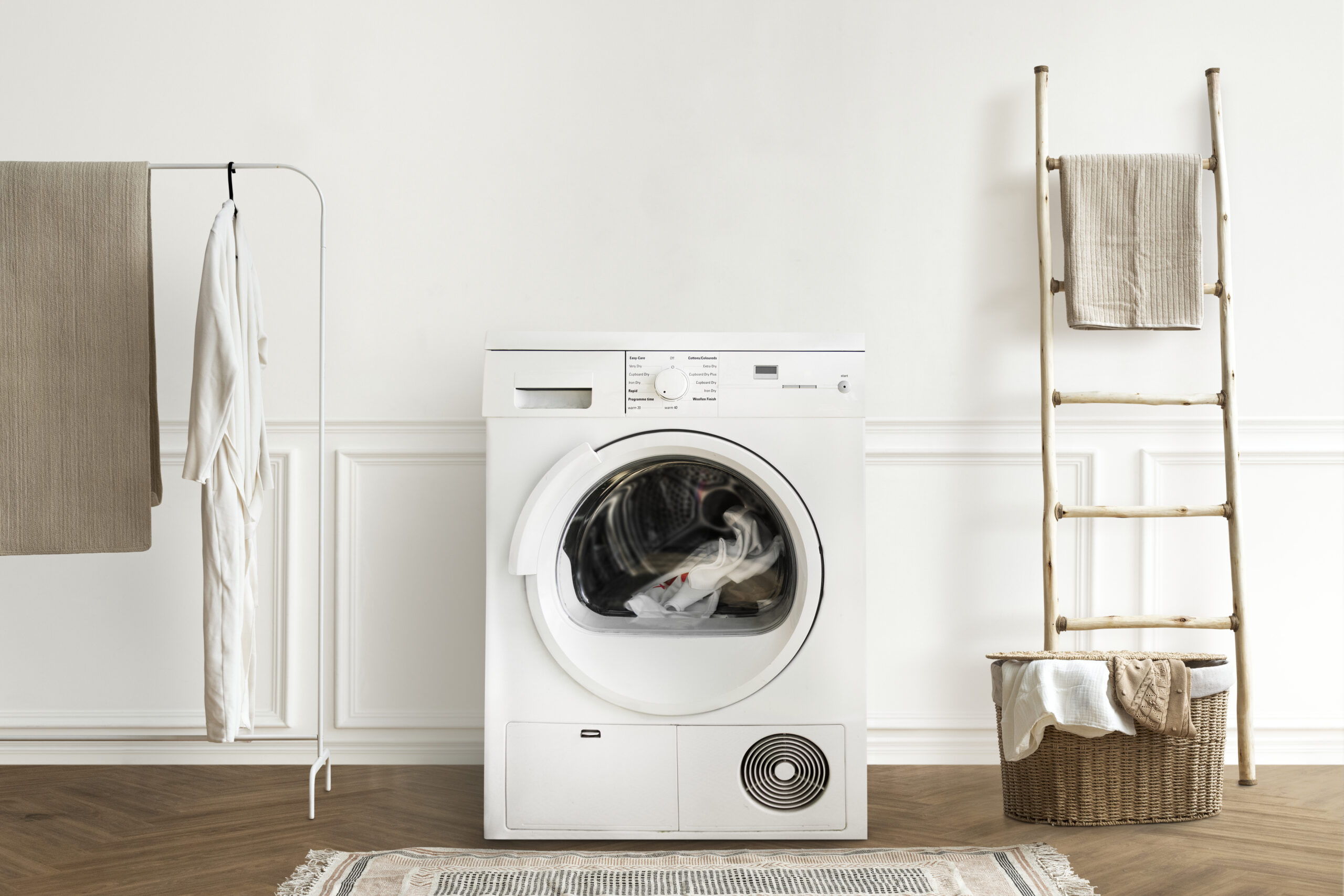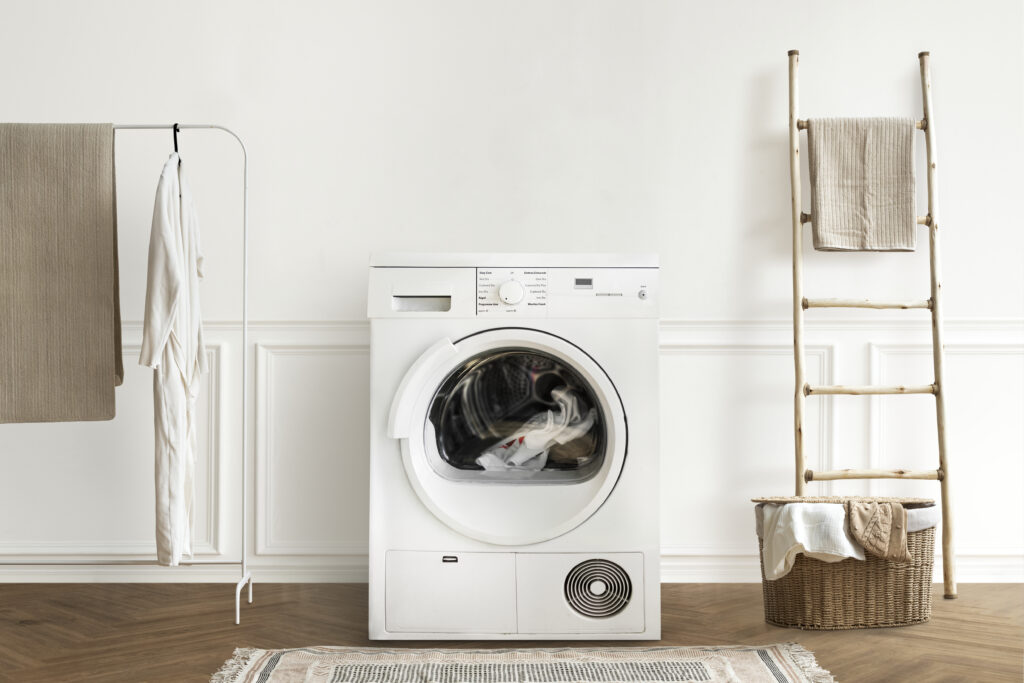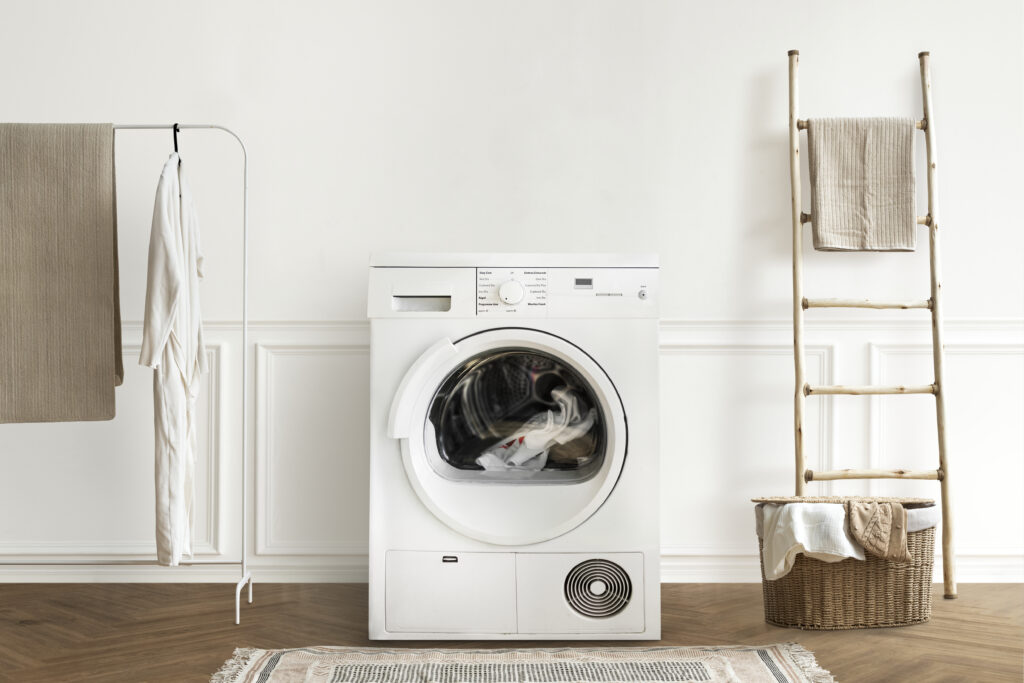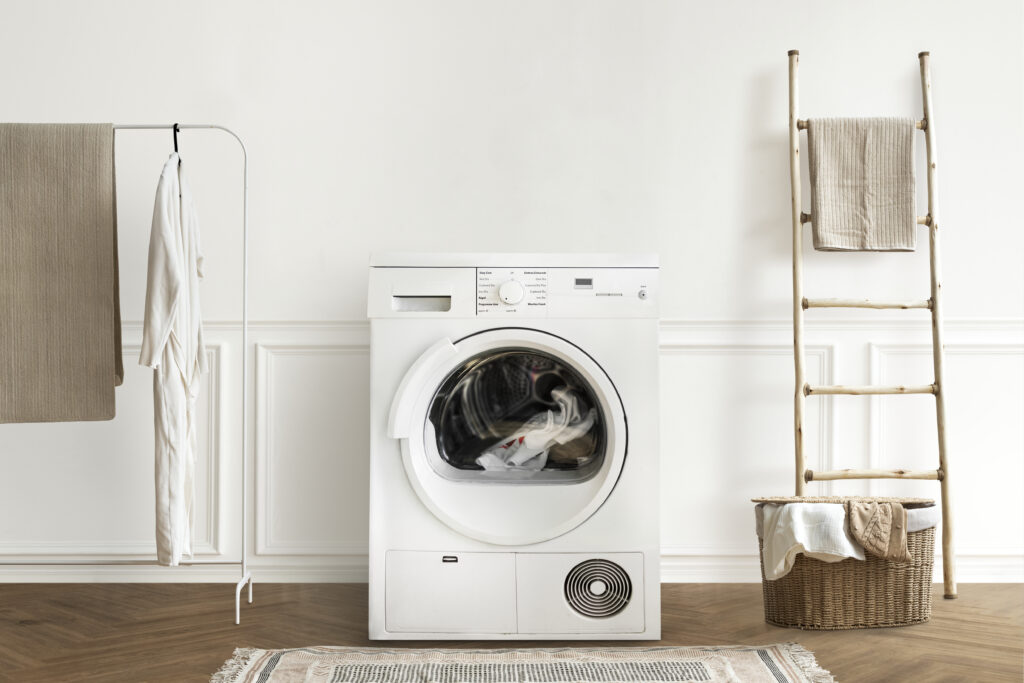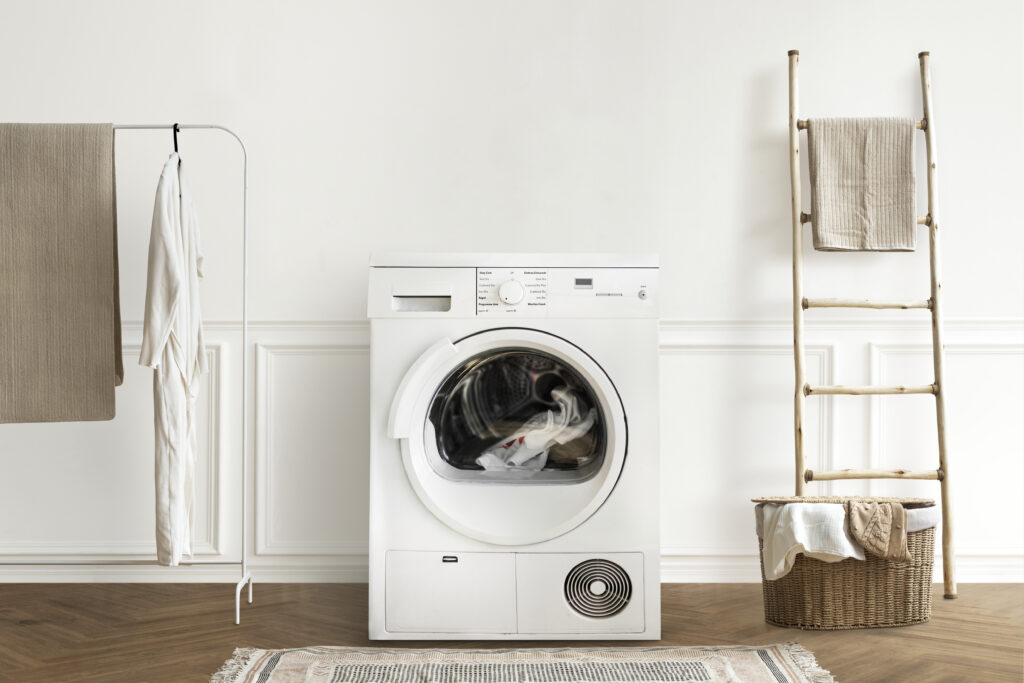Laundry rooms in the USA are getting smarter, more stylish, and—thanks to compact urban living—smaller. Whether you live in a small house, a condo, or an apartment, having a well-designed laundry space can save time, reduce clutter, and even improve your home’s value.
In this guide, we bring you 25 practical, space-saving, and aesthetic small laundry room ideas perfect for American households in 2025. Whether your washer is in a closet, corner, basement, or hallway, these tips will help you maximize utility without sacrificing style.
🧺 1. Stack Your Washer & Dryer
One of the simplest ways to save floor space is to stack a front-load washer and dryer. Many modern appliances are designed for vertical alignment, and a stacking kit makes installation safe and secure.
✅ Best For: Closets, narrow hallways, and apartments.
🧺 2. Use Overhead Cabinets
Utilize vertical wall space with overhead storage cabinets. These are ideal for storing laundry detergent, dryer sheets, stain removers, and more—keeping clutter out of sight.
✅ Pro Tip: Go with white or light-colored cabinets to make the room look larger.
🧺 3. Install a Fold-Down Drying Rack
When floor space is tight, a fold-down drying rack attached to the wall is a game changer. Fold it out when needed and tuck it away when not in use.
🛠️ DIY Option: Use wooden slats or install a retractable clothesline.
🧺 4. Maximize Behind-the-Door Storage
Use the back of the door for hooks, baskets, or hanging bags. This often-ignored space can store clothespins, lint rollers, and even an ironing board.
🧺 5. Create a Countertop Over the Washer/Dryer
Install a custom or prefab countertop over your front-load machines. It provides a great space to fold clothes or organize baskets.
✅ Material Idea: Use butcher block or quartz for durability and style.
🧺 6. Install a Pull-Out Hamper
A pull-out hamper hidden in a cabinet keeps dirty laundry concealed and organized—especially useful in small rooms.
🧺 7. Use Slim Rolling Carts
Slide a slim cart between your washer and the wall or another appliance. It’s perfect for storing detergent, bleach, and small cleaning tools.
🧺 8. Add a Pop of Color
Just because your laundry room is small doesn’t mean it has to be boring. Use bold wallpaper, colorful cabinets, or fun flooring to make it cheerful.
🎨 Popular in 2025: Sage green, navy blue, or geometric peel-and-stick wallpaper.
🧺 9. Hang a Pegboard Wall
A pegboard can be used for hanging laundry tools like brushes, clothespins, and hangers. It’s flexible, customizable, and visually appealing.
🧺 10. Combine with a Mudroom or Entryway
If space is tight, combine your laundry area with an entryway. Use cubbies for shoes, hooks for jackets, and keep your washer tucked neatly into a side wall.
🧺 11. Choose Compact or All-in-One Washers
If your space is ultra-tight, consider a compact washer and dryer set (24-inch width) or an all-in-one washer/dryer combo. These are especially popular in city apartments.
🏷️ Top USA Brands: LG WashTower™, GE Spacemaker™, Bosch Compact Washer.
🧺 12. Use Baskets and Labels
Group items by function—like towels, delicates, or cleaning tools—in labeled bins or baskets. Open shelving looks tidy and stays functional when everything has a place.
🧺 13. Add Under-Cabinet Lighting
A well-lit space is easier to work in. LED strip lights under cabinets brighten up small areas and make your laundry room feel high-end.
🧺 14. Install a Sliding Barn Door
Traditional doors take up swing space. A sliding barn door adds a rustic charm while saving precious square footage.
🚪 Space-Saver + Style Bonus
🧺 15. Hide It Behind Cabinets
Turn your laundry into a secret by hiding it behind bi-fold or French cabinet doors—ideal for laundry nooks in kitchens, bedrooms, or hallways.
🧺 16. Use a Wall-Mounted Ironing Board
Save space with a fold-out ironing board mounted on the wall or inside a cabinet. Some models even come with built-in mirrors.
🧺 17. Paint the Ceiling
In a small room, painting the ceiling a bright or bold color draws the eye upward and creates a feeling of space.
🎨 Trending in 2025: Sky blue, warm terracotta, or charcoal gray.
🧺 18. Combine Laundry with Bathroom Storage
If your washer is in a bathroom, make the most of shared space by using coordinated cabinetry, towel hooks, and multi-functional shelves.
🧺 19. Use Vertical Hanging Rods
Install a rod above the machines or under a shelf for air-drying clothes or hanging shirts straight from the dryer.
🧺 20. Go for Foldable Laundry Baskets
Use collapsible or stackable baskets that you can stow away when not in use. Great for reducing clutter and freeing up floor space.
🧺 21. Try a Compact Utility Sink
A small utility sink can fit next to a compact washer and is super helpful for handwashing or treating stains.
🛁 Wall-mounted or corner utility sinks are perfect for small spaces.
🧺 22. Wallpaper Just One Wall
Instead of covering the whole room, accent a single wall with bold wallpaper to create visual interest without overwhelming the space.
🧺 23. Smart Laundry Features
If you’re buying new appliances, look for Wi-Fi-enabled washers that notify you via smartphone. Some even auto-order detergent when low.
📱 Recommended App: LG ThinQ™, Samsung SmartThings™, Whirlpool App
🧺 24. Hang Curtains Instead of Doors
Use a stylish curtain to hide your laundry nook. It’s cheaper, easier to install, and takes less room than swinging doors.
🧺 25. Decorate with Plants & Art
Add life with small indoor plants, framed art, or quotes. Even in a utility space, personality matters!
Final Thoughts
Just because your laundry room is small doesn’t mean it has to be dull or dysfunctional. With a few smart upgrades, DIY projects, or simple rearrangements, you can turn any tight space into a stylish, organized, and highly efficient laundry zone. Whether you’re a homeowner in a suburban house or living in a New York City apartment, these small laundry room ideas are designed to work for your space—and your budget.
